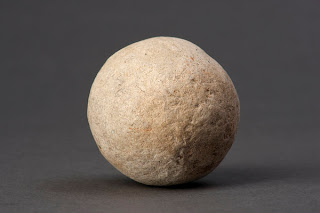 |
| A Bezoar stone from Early Modern Northern Europe. Source |
The English word "bezoar" comes from the Persian word pâdzahr, which literally means "to expel poison". The bezoar as an object has gone through several incarnations, many of which together form the basis of the bezoars in the Harry Potter series.
The belief began in the Arabian Peninsula from folk tales about a stones found by pools of water said to be produced in the eyes of the Bezoar Goat after it ate snakes and dipped its head in the pools to cool the heat that the venom caused. The stone was either ground up or put whole on injuries to help to cure them. The "oriental bezoar" formed in the digestive tract of this goat is still valued by some, and the idea that these goats can cure themselves from snake venom is still believed in certain parts of the Arabian Peninsula.
Arab physicians later brought the legend to Europe and sold stones formed in the stomach and intestines of several different animals. Some were said to cure any poison while other physicians prescribed bezoars from specific animals for certain poisons. They were either ground up and mixed with other substances or simply dropped in glass to remove any poison that might be in it.
In medical science today a bezoar is defined as "a mass found in the gastrointestinal system of an animal formed from compressed matter".
In the Harry Potter series, "beozers" are stones from the stomach of a goat, a reference to Capra aegagrus aegagrus, the aforementioned Bezoar Goat, and are used, mostly in potions, to counteract poison, such as in the "Antidote to Common Poisons" brewed in Pottermore. If you need another one of these in Pottermore just go to the Hospital Wing (Chapter 17, Moment 2), zoom in all the way, and look in the ingredient shelf.







No comments:
Post a Comment
Don't be shy; feedback is appreciated and will help to improve this blog, too!